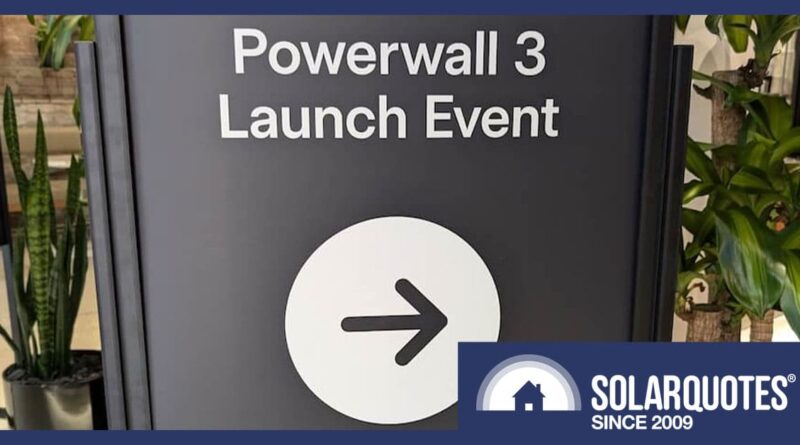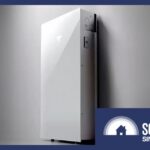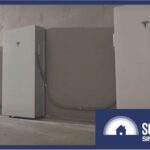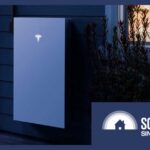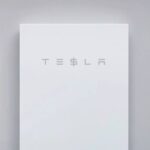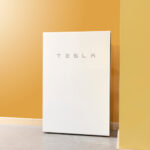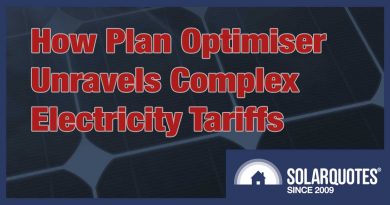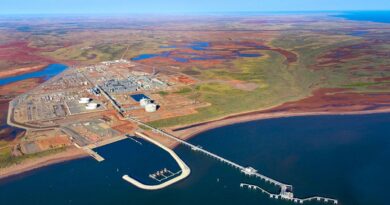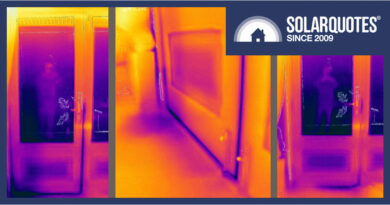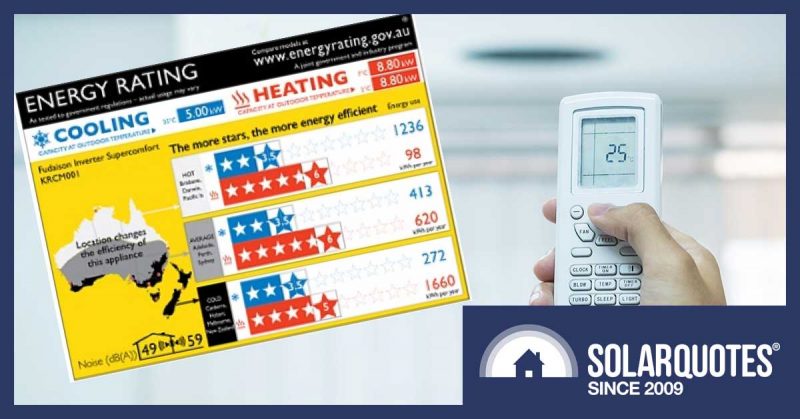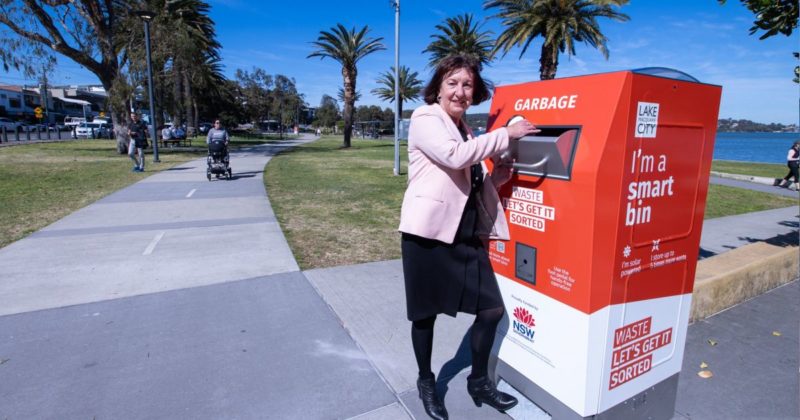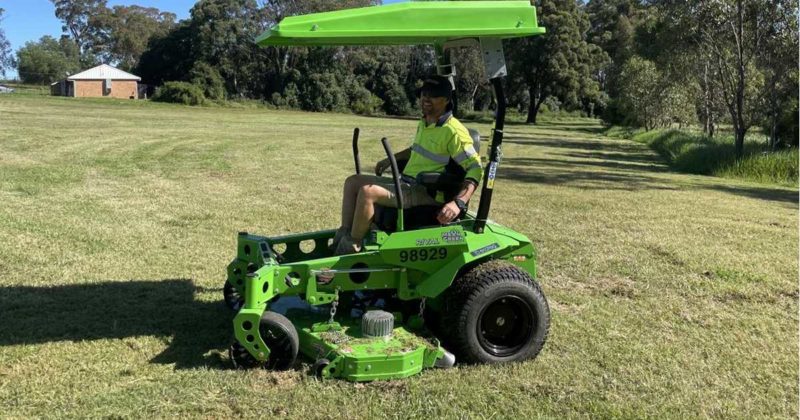Australian Powerwall 3 Unwrapped: More Juice, More Dollars, More Questions
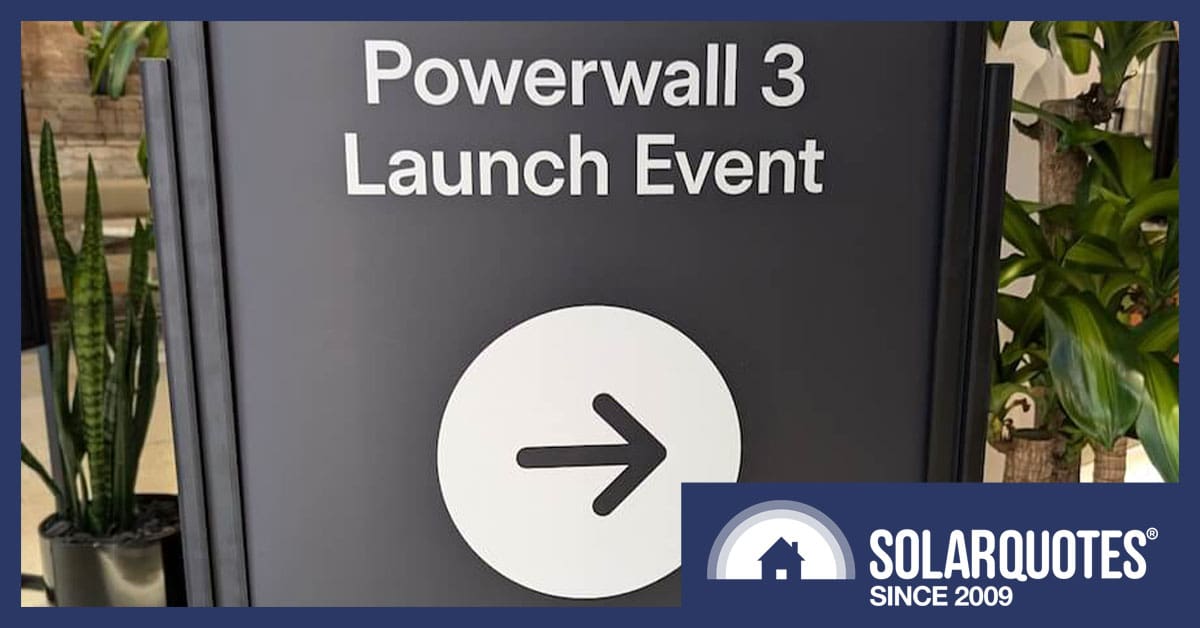
Tesla just held a detailed media and installer briefing about the new Tesla Powerwall 3 (PW3) in Sydney, and I was there for SolarQuotes to make sure I got answers to key technical questions no one else is likely to ask…
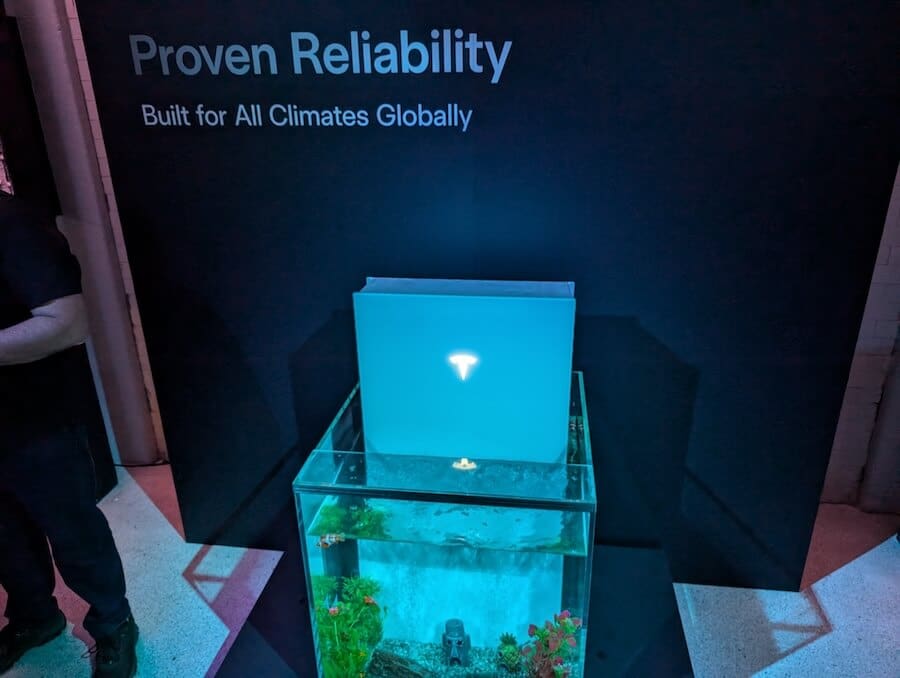
Tesla showing off the flood resistance of the Powerwall 3.
Look closely at the Australian version of Tesla’s Powerwall 3, and you’ll realise there have been significant improvements made from the Powerwall 2 including:
- switching to LFP cells, with preheat mode (for max power on cold mornings)
- built-in solar inverter, which supports up to 20kW of DC solar per PW3
- built-in 3x high current MPPT tracker modules (unlike the USA, which gets 6 x lower current MPPTs)
- Up to 11.04 kW discharge rate (up from 5kw in PW2) supporting larger appliances like ducted AC and reducing clipping
- integrated DC isolator
- reportedly faster installation
- returnable reusable packaging
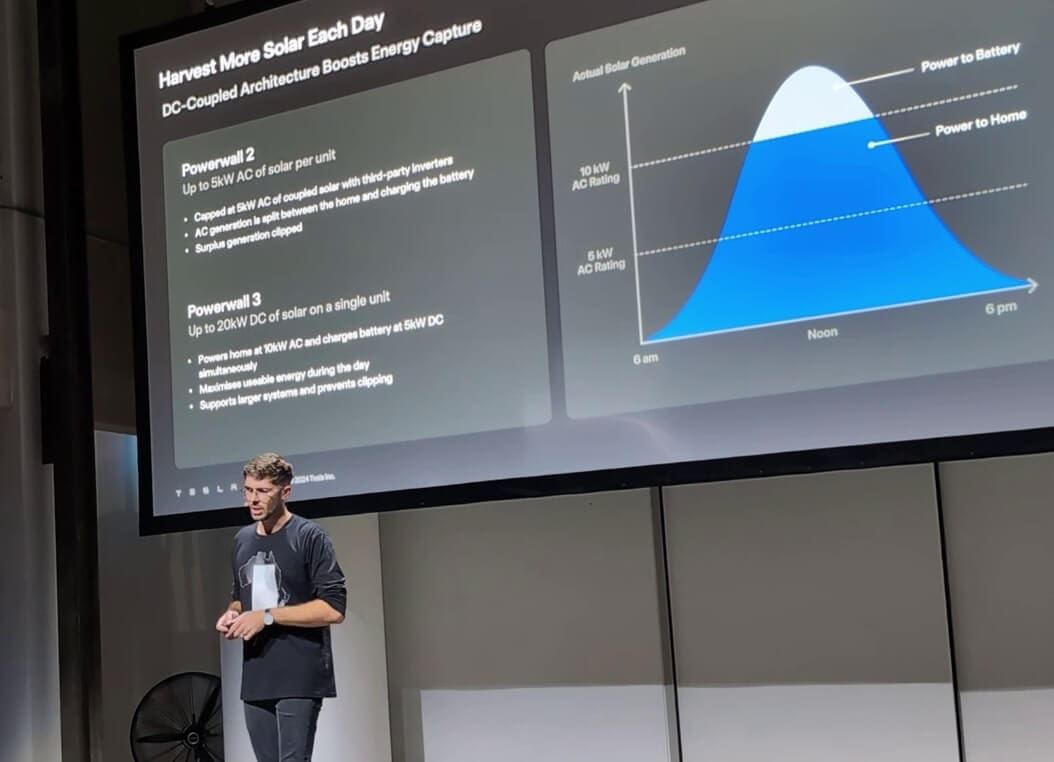
Comparing Powerwall 2 and Powerwall 3 specs at the Launch Event in Sydney
For brand new installs of solar-plus-batteries, this means you could skip buying a traditional solar inverter from Fronius, Sungrow, Goodwe, etc and connect up to 3 strings of solar directly to the Powerwall 3.
Tesla claims that the built-in solar inverter can handle complex roofs and shading with ease, with Solar to Home/Grid efficiency of 97.5% and Solar to Battery to Home/Grid Efficiency of 89%.
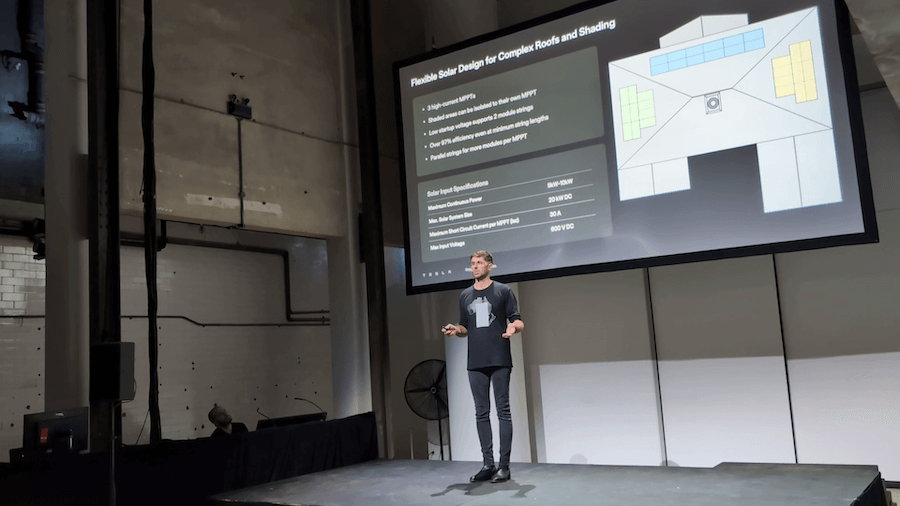
PW3’s three MPPTs let you easily put panels on three roof areas facing different directions.
If you were hoping that Tesla switching to LFP for the new Powerwall 3 would reduce the cost compared to the Powerwall 2, you may be disappointed. A Tesla spokesperson said that:
“making a cheap product that compromised on performance was not an option for us”.
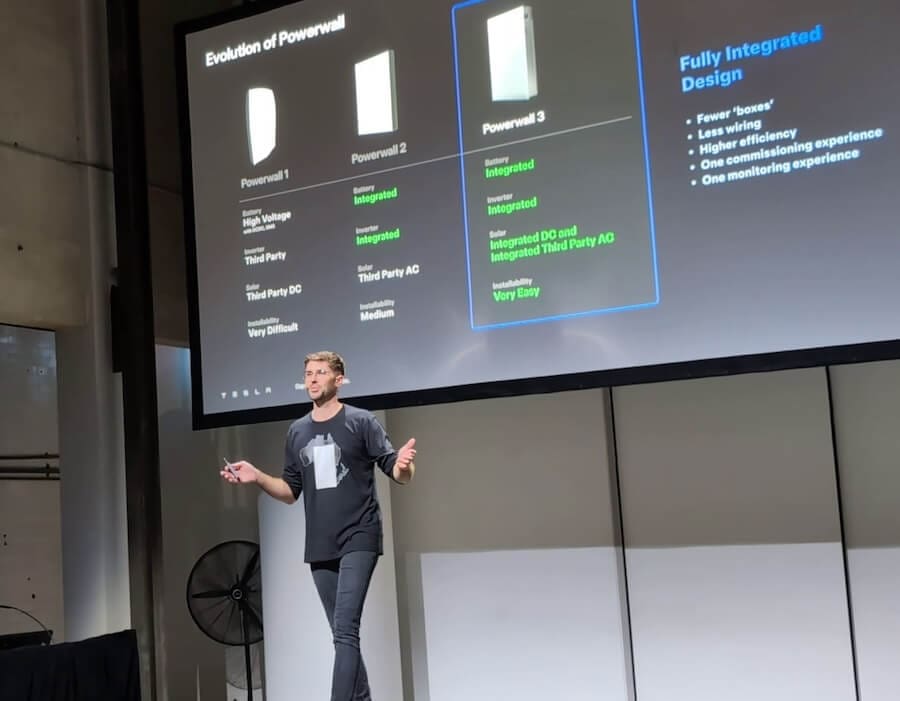
Comparing the trio of PW1 vs PW2 and PW3 it’s clear that a lot has happened since Tesla Energy launched the first 6.4 kWh Powerwall 1 in 2015, followed quickly by the 13.5 kWh Powerwall 2 less than a year later.
For each new generation of Powerwall, Tesla has integrated more of the external “boxes”, thereby:
- reducing external wiring
- improving efficiency
- improving aesthetics
- reducing the parts cost for installers
- resulting in faster installations onsite.
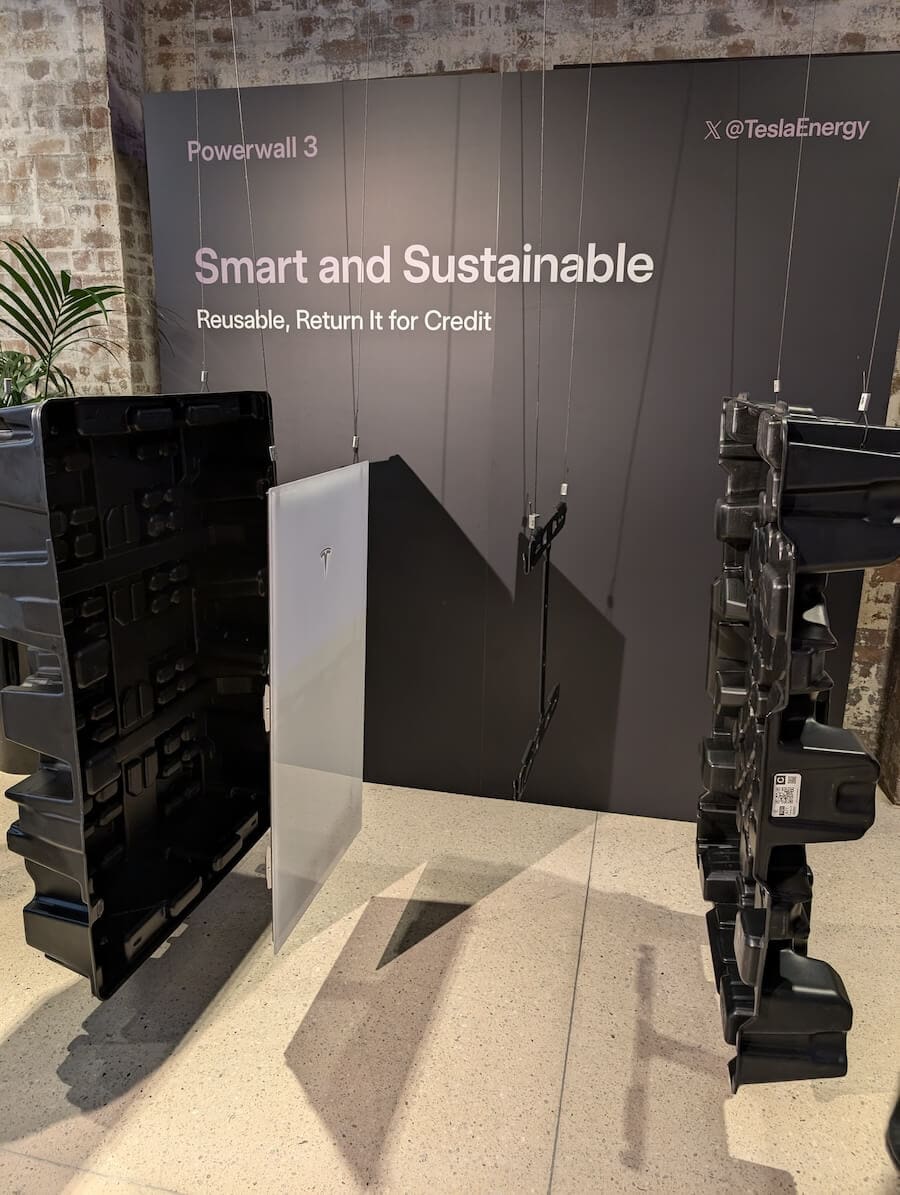
Reusable, returnable packaging, glass front plate and wall bracket.
Powerwall 3 Q & A
With regard to commonly asked technical queries from SolarQuotes readers, I ascertained the following at the media briefing:
How much does PW3 cost?
“Pricing for Powerwall 3 is $13,600 AUD and $15,600 NZD including Gateway 2 excluding installation. The price of Gateway 2 remains unchanged”.
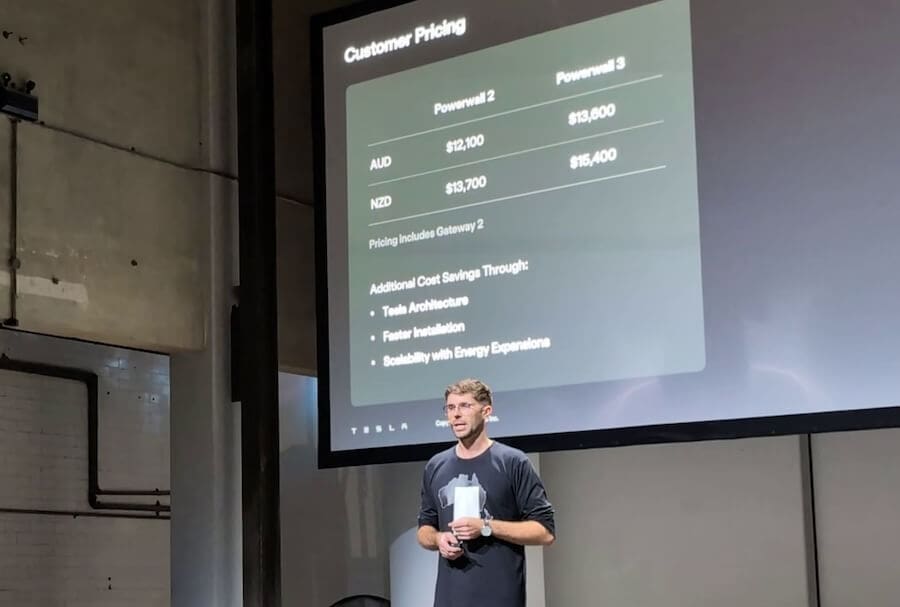
What about PW3 Energy Expansions?
“Powerwall 3 Energy Expansions are currently scheduled for launch in early 2025. Pricing for these will be made available closer to launch. Powerwall 3 Energy Expansions will be more affordable than a Powerwall 3”.
Does PW3 come with stack kit for multiple installs?
“At launch, you will be able to install up to 4 Powerwall 3s in parallel to provide up to 40kWs of inverter capacity, 54kWh of storage, and up to 80kW of solar. Each Powerwall 3 will require its own mounting bracket”.
“Powerwall 3 Energy Expansion units will be available in 2025. They will be stackable behind each Powerwall 3 and installed with a single factory-supplied expansion cable. This expands systems to 4x Powerwall 3 units, each with up to an additional 3x Powerwall Expansion units, 16 in total.”
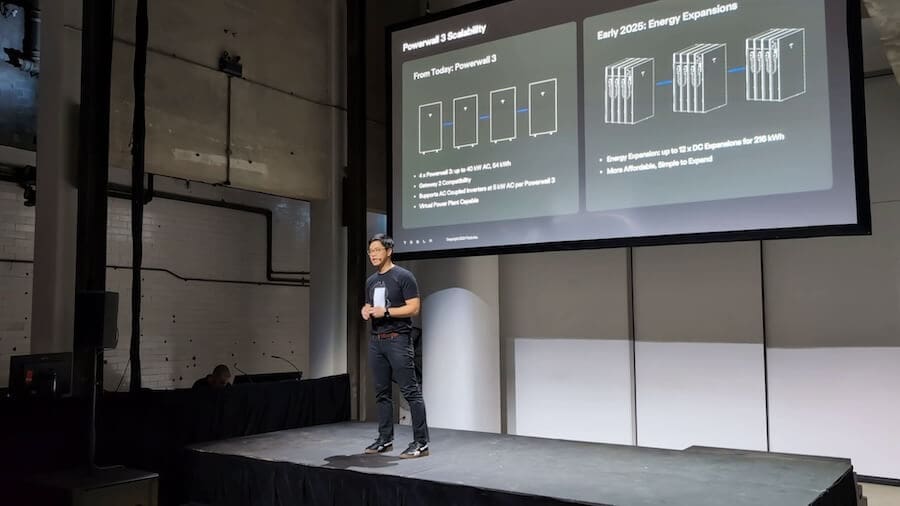
Explaining how PW3 is stackable with 3 other PW3s or 3 cheaper expansion units – coming in 2025
Are Tesla discontinuing the PW2? If you are – and a customer has a PW2 – can you expand your storage with a Powerwall 3 slave unit?
“Powerwall 3 will become Tesla’s home storage solution. Powerwall 2 owners are encouraged to speak with Certified Installers if they are looking to expand their current system using additional Powerwall 2 which will continue to be available for some time”.
Is PW3 compatible with PW2 and existing solar?
“Powerwall 3 is not currently compatible with Powerwall 2. For customers with existing solar systems, Powerwall 3 can be AC coupled and is compatible with all solar inverters”.
Will PW3 support bidirectional charging with a Wall Connector and a compatible car?
“Powerwall is a standalone home battery product that is bi-directional by design to both charge and discharge to the grid. Bi-directional vehicle charging is not available in Australia at this time”.
Do Tesla support PW3 for off grid?
“Powerwall 3 has a grid forming inverter and can provide backup protection for extended periods in grid tied applications. Off grid applications may be supported in the future”.
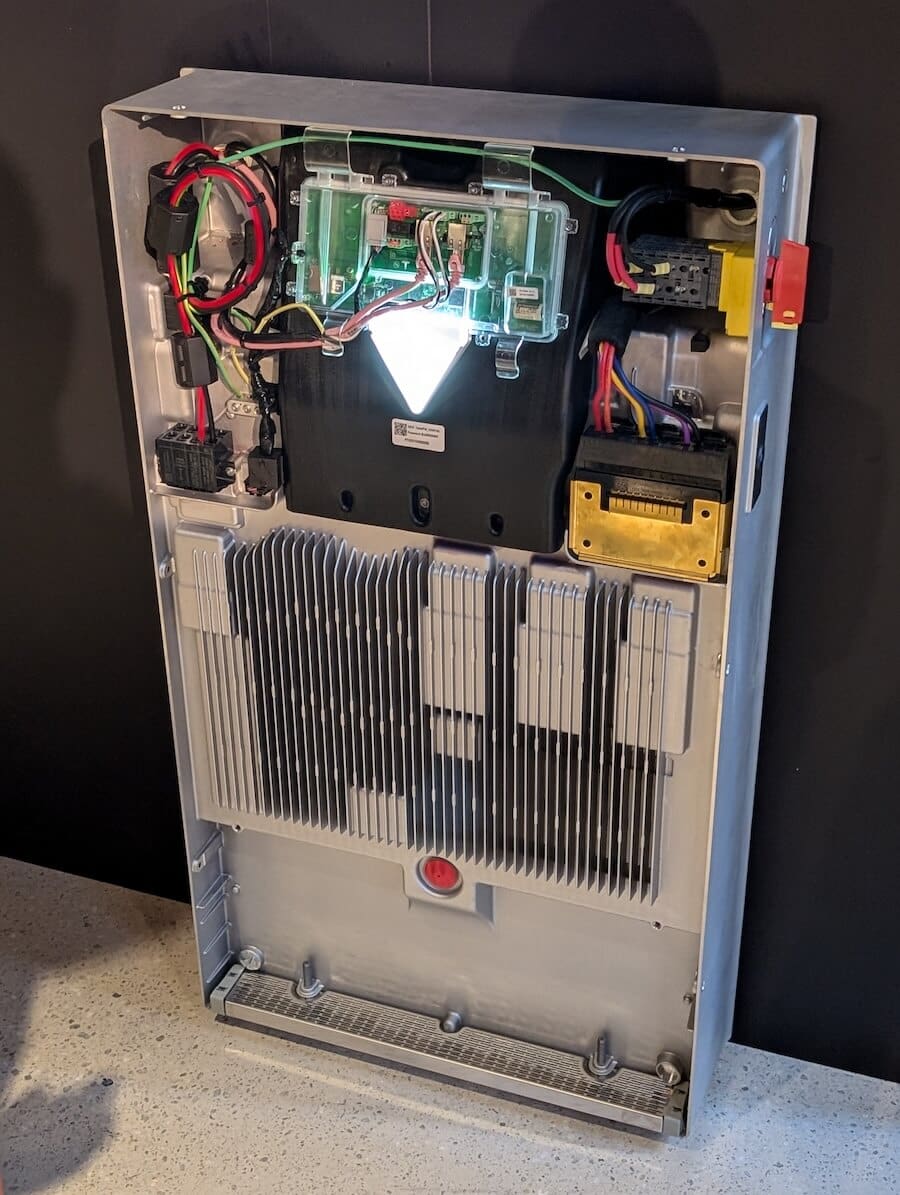
Inside the Powerwall 3 – it’s quite spacious actually. That will make installation easier.
Is PW3 limited to 9.99kW in Aus?
“No, Powerwall 3 is rated for 10kW”.
When is native 3 phase support available?
“PW3 can support loads on multiphase sites through net metering with backup on a single phase”.
DNSP inverter limits might cause problems unless they have 3 phase… so will the PW3 have a gateway arrangement like PW2 does?
“Yes. Powerwall 3 maintains compatibility with Gateway 2. Powerwall 3 is sold with Gateway 2”.
Will PW3 have an extended warranty if used with Tesla VPP?
“Powerwall 3 is fully VPP compatible, we haven’t announced yet any changes to Tesla Energy Plan or how Powerwall 3 will work with Tesla Energy Plan”.
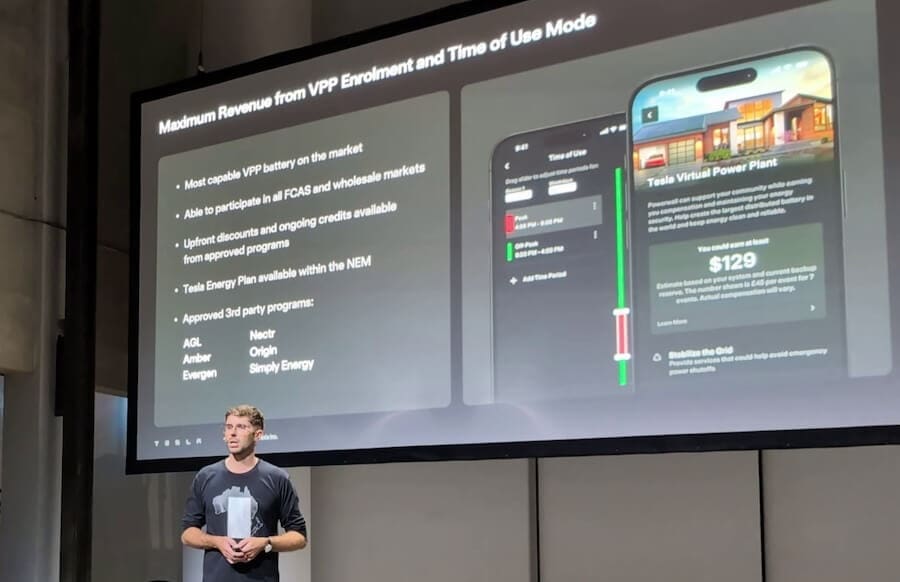
Powerwall 3 is compatible with The Tesla Energy Plan, Amber and VPPs from AGL, Origin, Evergen, Simpy Energy, and those people that dress up like bees.
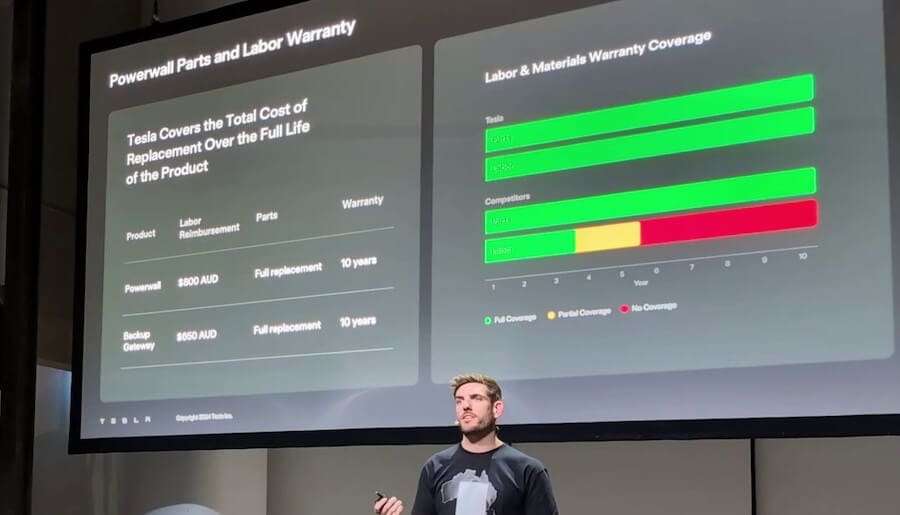
Tesla confirms that they are happy to pay labour costs during the 10-year warranty: $800 for replacing the PW3 and $650 for replacing the Gateway.
Can PW3 do a black start?
“Yes. Powerwall 3 has a grid-forming inverter and can provide backup protection for extended durations”.
“Powerwall 3 has enhanced black start capabilities with the ability to inject up to 185A to start large devices with motors such as heats pumps, pool pumps, air conditioners and electric vehicle charging”.
Will PW3 be legal in WA with their 5kW inverter limit?
“Yes, PW3 will be listed with the CEC and compliant to Australian Standards. Powerwall 3 will have a 5kW configurable variant through software at commissioning”.
How much quicker is to install PW3 compared to PW2?
“Our certified installers are telling us that they are going from 1 solar and Powerwall installation a day to 2 installations a day. We’ve made improvements to tooling and commissioning which reduces installation cost and time”.
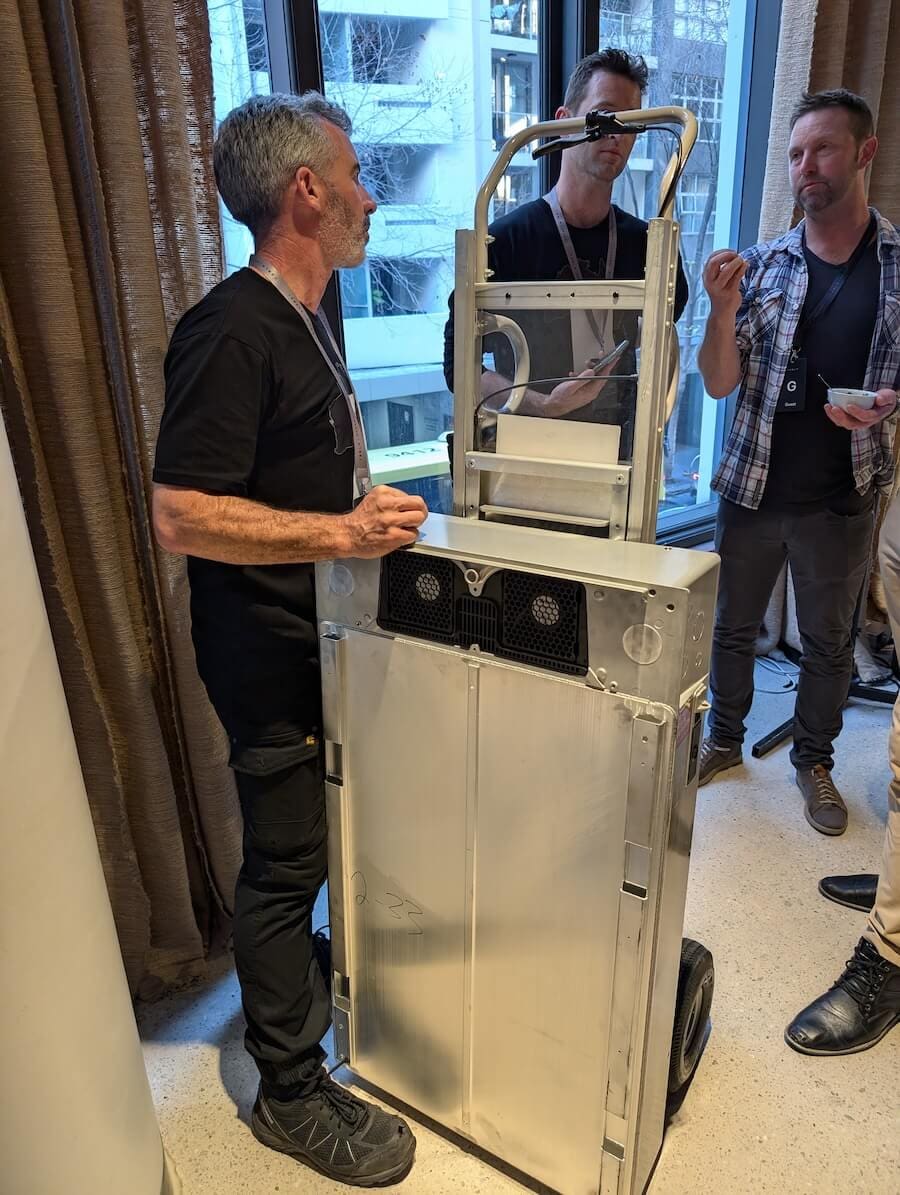
Tesla have designed a trolley that easily removes the Powerwall 3 from the packaging without risking the installer’s back.
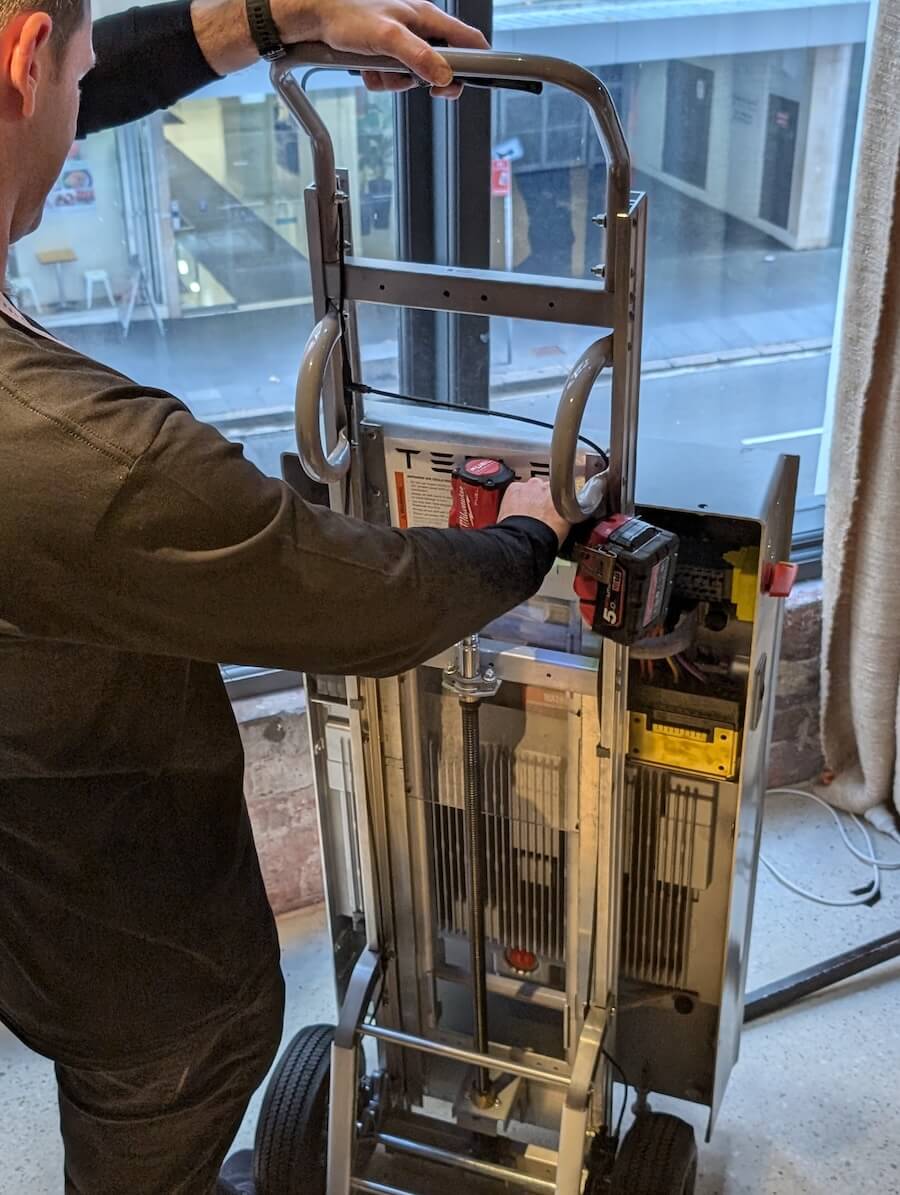
Installers can raise the 130kg Powerwall 3 with their drill. Tesla claims this makes 1-person installs feasible.
What happens next?
Pre-orders for the PW3 are available now either direct from Tesla, or – even better – via your favourite Tesla-certified installer.
Installer training begins on Monday, August 19th. The all-important CEC Listing is in the final stages and expected to be completed within a few weeks, after which deliveries are due in late September.
To compare the Powerwall 3 with other batteries on the Australian market, visit our constantly updated Battery Comparison Table.
Get Quotes For Powerwall 3 + Solar
The most cost-effective way to get a Powerwall 3 is to take advantage of the built-in solar inverter: with a big solar array.
To get multiple quotes for a Powerwall 3 and solar, you can use our ‘get quotes’ service:
First, choose your closest location,
- then click ‘more filters’

- Look for ‘Battery Brands Sold’
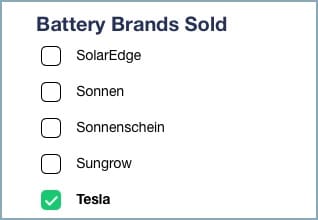
- check ‘Tesla’
- and choose the installers you’d like a quote from.
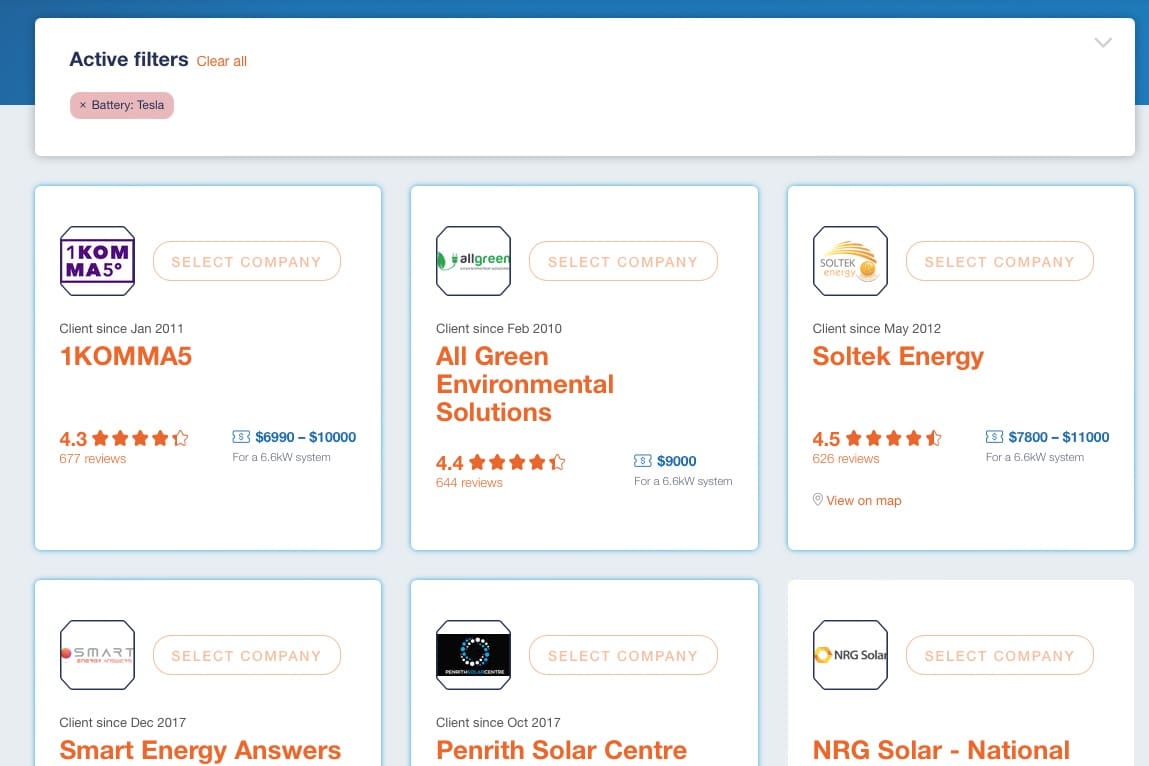
Or if that’s too much choice, just go here, and we’ll choose for you. Just be sure to write “Tesla Powerwall 3” when we ask for ‘any other info’.
So, are you likely to invest in a solar-powered Powerwall 3? Let us know in the comments…
Original Source: https://www.solarquotes.com.au/blog/powerwall-3-launch/

